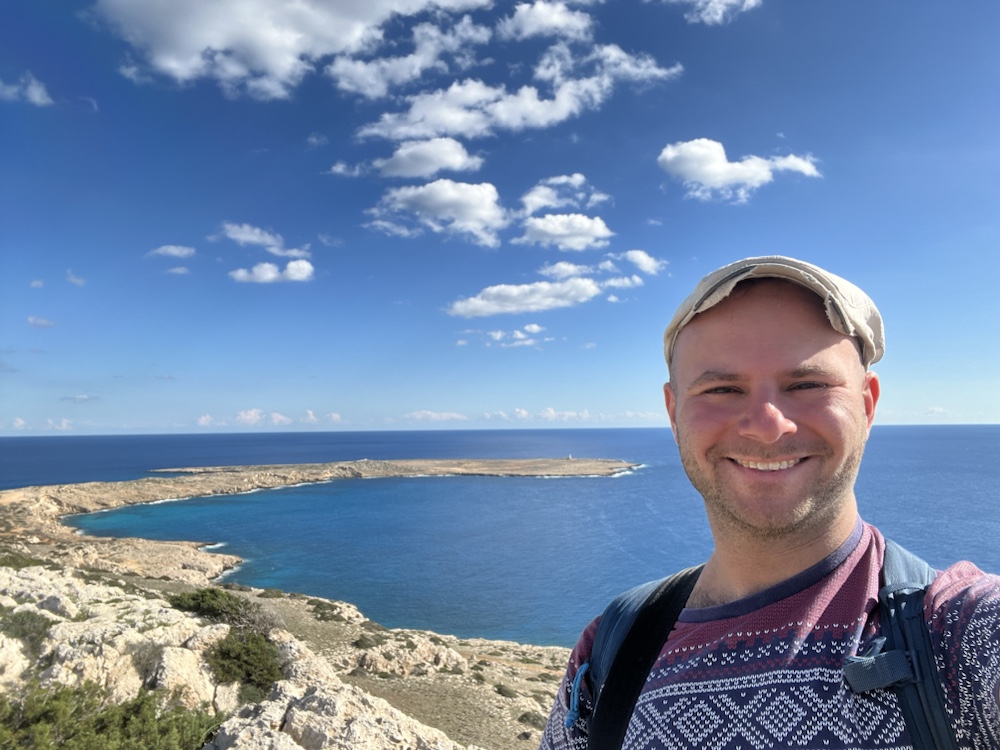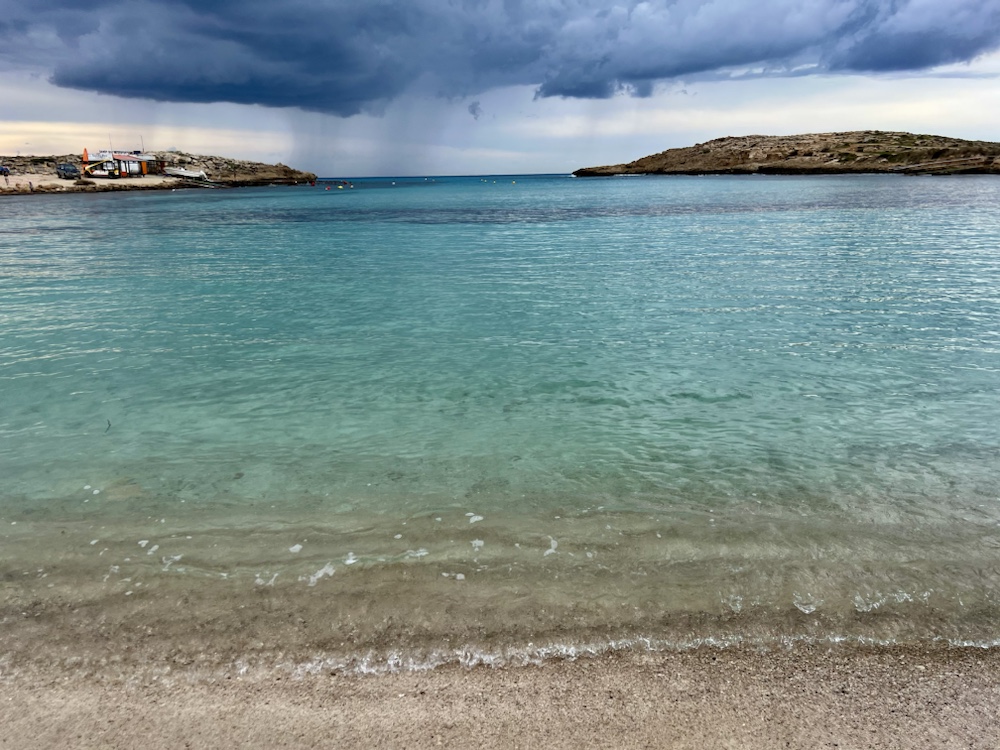
Edge of the EU



At first light, after stocking up on pastries for the day, I begin hiking along the coast. The beaches are sandy, the water looks beautiful, and palm trees line the path. Just a bit further along the coastline becomes rocky like a lunar desert, the sun gets hot and my shoes get torn up by the sharp rocks. I persevere through to see the unique rock formations, caves and natural bridges along the coast. I finally make it to a row of sea caves. I climb down inside one, but I don’t risk the rough waters (besides, the sea is too cold for me). I do wade a bit in a rocky lagoon; the water is crystal clear without the brown sandy beaches underneath.



I follow a path through the rocky landscape to the start of a nature trail along the side of a large cliff. It is spectacular for birding, and I see a giant lizard on a rock too. I don’t get too close to the water here, but I can see caverns and canyons from a distance. I go up to the viewpoint for a look at Cape Greco, the easternmost point of the EU, and a great view back from where I hiked. It is tricky to get back down, and I’m tempted to keep circling around the cliff-face with the trail offering fantastic views and a sea breeze. But I continue on towards Cape Greco.
I cross Cape Greco to a particularly blue lagoon, which is only so blue because it is so rocky!



There is a cave just a bit further up the coast and a small church where I rehydrate and even get an oreo ice cream. Hiking along the protected forest trail, looking out over the rocky coastline to see a beautiful beach bay—all while licking an ice cream—has to be my favorite way to hike.



I continue down to the beach and back up along the trail over some more turquoise bays until I reach the “cyclops cave”. This cool cave has nothing to do with The Odyssey, but it’s cool how it connects through the cliff and comes out the other side. At this point, I turn around and take the bus back, watching the sun set over the sea behind the clouds.




In the morning I hike the opposite direction to the beautiful Nissi beach. It rains on and off, and I have to pass through a sandy gulf to continue the path, but it is beautiful when I arrive. The sandy beach and water, even when overcast, still glows turquoise. The little island off the coast is nice too. I find the sand is warmest at the place where the water hits the shore. I dip my feet in the water—and to my surprise the water is warmer than the outside temperature. I warm my feet a little before I walk back under the cover of clouds. Ironically, the sun comes out right as I return only to sit and wait an hour for the bus to my final destination in Cyprus.














































































































